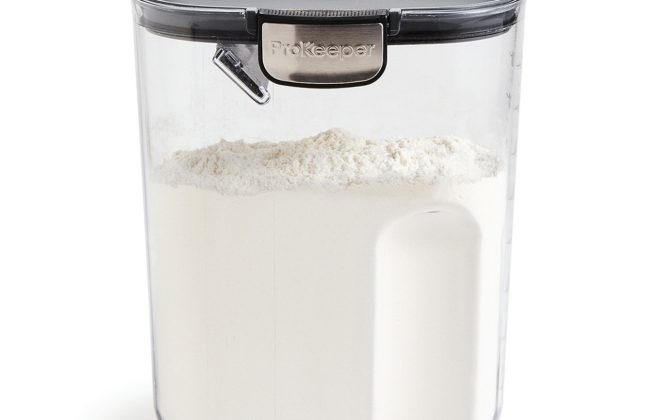Since it serves as the basis for so much of your cooking, flour is highly significant. You must use flour when making sweets in order to bake them in the oven. Because of this, flour is one food ingredient that requires a separate, sealed container. Use a plastic zip-top bag if you don’t have an airtight container. Although it is unlikely to be aesthetically pleasing, it does a good job of keeping your flour protected. Additionally, this method can only be used if you have a small quantity of flour that you can store for a brief period of time. You can always buy containers for storing flour malaysia that is airtightly and sealed to keep your flour safe and sound.
Why Airtight Container?
An airtight container is not just for flour. You can also use it to store other cooking ingredients that are suitable. Leftover foods and storage in the freezer also use an airtight container.
- Maintain Food Quality
Food will stay fresher if you store it in airtight containers rather than leaving it in its box or bag. If you delay too long to use food that has come into touch with ambient air, it may become ripe or even useless. They stay fresher for a longer period of time when they are kept in an airtight container.
- Keep Insects Out
Another benefit of using airtight containers is the ability to prevent pests like mice and bugs from the food. Pests can easily chew through wrapping and access to the food if placed in a carton or left in their original bag. You may prevent unauthorised visitors to your pantry from contaminating your food by storing it in storage containers.
- Variety Exists for You
You can choose from a variety of sizes and forms of airtight and liquid-tight food storage containers depending on what you require. For meals on the go, you can use glass or plastic containers and even lunch containers. These containers can keep both hard and liquid meals because they are liquid-tight, including stews and drinks.
Make sure you select the appropriate measurement container while making your decision. Larger storage containers are ideal for dry foods like flour, sugar, rice, and other such items, while other smaller containers are designed for lunches.
Keeping Flour Fresh
Buying only what is necessary. Avoid being seduced by bargains. Try to just purchase the amount of flour you anticipate using over the next few weeks. Because flour draws humidity, it can soon become mouldy. To ensure that you only buy what you actually need, try to find the bulk containers at the grocery store.
Locate a clean, secluded spot. Keep that container off the counter where it is. Sunlight and warmth can cause the flour to spoil too soon. Alternatively, look for a cabinet that is far from the kitchen’s oven and other hot locations.
Or better yet, freeze it. Make space in your freezer if you purchase more flour than you can consume within a few weeks. If flour is stored in this manner, it can last up to a year.
